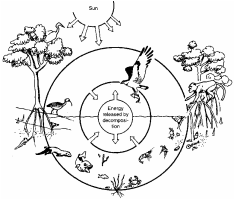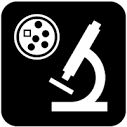|
As a placenta encapsulation specialist, I am often presented with a lot of questions, myths and curiosity from either potential clients, skeptics, or just anyone wanting to know more. Here are some common myths that I have debunked for you all in one location, followed by some of my most common questions of concern.  Isn't placenta encapsulation just a form of cannibalism? Nope! While it might seem unappetizing to some people, placentophagy (the act of ingesting the placenta) is far from earning the label of cannibalism! The Merriam- Webster definition of cannibalism is "the eating of the flesh of an animal by another animal of the same kind". With placenta encapsulation, you are consuming your own placenta - and no one gets harmed in the process!  If the placenta is a filter for the baby, isn't it full of toxins? "Filter" is often the term given to placentas. However, placentas don't function in the same way that a filter for something like a furnace would. Placentas can prevent toxins from reaching the fetus - but they don´t continue to store all of the things that we don´t want for the maternal body or baby. The placenta allows nutrients to pass through the fetus, keeps the maternal and fetal blood separated, and allows for gas exchanges to occur. Waste and toxins are processed by the liver and kidneys of the pregnant body and eliminated.  I'm vegetarian/vegan. I can't eat my placenta. Isn't it meat? Placentas are the only meat that come from life, not death. This makes it totally suitable for vegans and vegetarians. I myself am a vegetarian, and I did placenta encapsulation after the birth of my son. If it isn't kept for consumption or some sort of ritual, the placenta will likely get incinerated - which is more wasteful than doing something with this nutrient rich organ! Don't all of the nutrients just get cooked out? There is no actual high heat cooking that is done during the process of placenta encapsulation. The Traditional Chinese Method uses steaming and dehydrating, and the raw method eliminates the steaming step of the process. A study was performed on heat-dried placentas that showed they still contained nutrients such as fiber, protein, hormones, and high mineral levels (particularly sodium, potassium, and phosphorous). Don't animals only eat their placenta to avoid attraction of predators? There is no hard evidence that this is the only case for mammalian placenta consumption in the wild. While this may be part of the reason placentophagy is practiced by almost all mammals, there have also been studies indicating that placenta consumption by mammals in the wild assists with pregnancy induced analgesia, increased lactation, and a better outcome in mother-baby interaction and caretaking. Can I still encapsulate if I received medical interventions (epidural, pitocin, cesarean, I am GBS+, or I have pre-eclampsia)? Will the hospital release it to me? Yes to all of it! The drugs used in these procedures (epidurals and pitocin) actually break down fairly quickly after entering the bloodstream. I have encapsulated for numerous clients who have received these interventions, and have never had a negative report post-encapsulation. Group B strep is a naturally occurring bacteria that rarely has any health threat. Any possible bacteria will get killed during the steaming and/or heat of the dehydration process during encapsulation. If this did develop into an infection during labor, then your placenta would not be suitable for encapsulation (and likely sent to pathology). Pre-eclampsia is not automatically contraindicated for placenta encapsulation. Many clients with pre-eclampsia have successfully consumed their placenta capsules. As long as no problem or infection is noted during the placenta examination, the placenta will likely be released to you and suitable for encapsulation. The hospitals in the Seattle area are very familiar with placenta encapsulation, and I have never had a problem obtaining a healthy placenta from anywhere. They will ask you to fill out a release form. Always let your midwife/OB and all staff know that you intend to keep your placenta! I hear there are no studies. What are the benefits of encapsulation? Most of the information gathered on placenta encapsulation has been done through anecdotal evidence provided by those who consumed their placenta postpartum. Some of the main positive side effects reported have been: reduction in postpartum baby blues, increased lactation, reduction in postpartum bleeding, reduction in postpartum pain, increased energy, and faster healing. There have been small studies performed showing a positive responses for placentas as a lactagogue, as well as some studies on placenta analgesia. We also know that the placenta contains amazing nutrients, minerals, and hormones such as progesterone, estrogen, oxytocin, placental opioid-enhancing factor, human placental lactogen, iron, corticotropin-releasing hormone, urokinase inhibiting factor, factor XIII, protein, fiber, and potassium (to name a few) - all of which aid in the listed benefits to placenta encapsulation. How do I know that my placenta will not get mixed up with someone else's? This is something that I take very seriously! For starters, I only work on one placenta at a time, and I label everything throughout the process. There is rarely more than one placenta in my home at a time. But if that happens, I don't even get to the second placenta until the first one is 100% completed. You also have the option of signing over a release to me in which your placenta gets a color coded and initialed label beginning as soon as I pick it up. I have my placenta in the freezer. Can I still have it encapsulated? As long as your placenta meets a few conditions, it will still be totally suitable for encapsulation. 1. It needs to have been frozen within 48-72 hours after the birth (and refrigerated before that). 2. It generally shouldn't be frozen for more than 6-12 months (ideally no longer than 6 months). 3. There should be no signs of frostbite existing on the placenta. 4. It was never thawed and then re-frozen. What happens if there is an infection and/or my placenta needs to be sent to pathology? If there is no risk of infection, but the hospital staff wants to send the placenta to pathology anyway, ask them if it is possible to just take a small portion instead of the entire placenta. However, if you develop an infection during labor, if there is an infection in the placenta, and/or the placenta needs to be sent to pathology for any other medical reason, it becomes unsuitable for encapsulation. The proper handling of the placenta cannot be guaranteed and monitored once sent to pathology, and there are safety concerns with ingesting a placenta that may contain an infection. References:
Nikole Keller, (August 7, 2015). Uncovering the Truth About Bacteria and Heavy Metals in the Placenta (Online) http://www.ncbi.nlm.nih.gov/pubmed/10932499. Nutrients and hormones in heat-dried human placenta, June 2000. Mark B. Krystal, Jean M. DiPirro & Alexis C. Thompson, (May 25, 2012). Placentophagia in Humans and Nonhuman Mammals: Causes and Consequences, Ecology of Food and Nutrition, 51:3, 177-197. http://www.acsu.buffalo.edu/~kristal/placentophagia%20review.pdf. http://www.drugs.com/pro/pitocin.html. Drugs.com, October 2015. Ilona S. Yim, PhD, Laura M. Glynn, PhD, Christine Dunkel Schetter, PhD, Calvin J. Hobel, MD, Aleksandra Chicz-DeMet, PhD & Curt A. Sandman, PhD, (October 27, 2009). Elevated Corticotropin-Releasing Hormone in Human Pregnancy Increases the Risk of Postpartum Depressive Symptoms. http://www.ncbi.nlm.nih.gov/pmc/articles/PMC2768579/ Lisa M. Bodnar, PhD, MPH, RD, Mary E. Cogswell, DrPh, RN & Thad McDonald, MD, (July 2005). Have we forgotten the significance of postpartum iron deficiency? Volume 193, Issue 1, Pages 36-44. http://www.ajog.org/article/S0002-9378(04)02092-7/abstract. Kristal MB, (1991). Enhancement of Opioid-Mediated Analgesia: A Solution to the Enigma of Placentophagia. http://www.ncbi.nlm.nih.gov/pubmed/1956610. Soykova-Pachnerova, Eva, Brutar, Vlastimil, Golova, Berta & Zvolska, Eva, (December 5, 2006). Placenta as a Lactogogon. First Obstetric Clinic. https://mommyfeelgood.files.wordpress.com/2010/10/placenta_lactagogon1.pdf
0 Comments
|
AuthorWrite something about yourself. No need to be fancy, just an overview. Archives
February 2017
Categories |







 RSS Feed
RSS Feed
